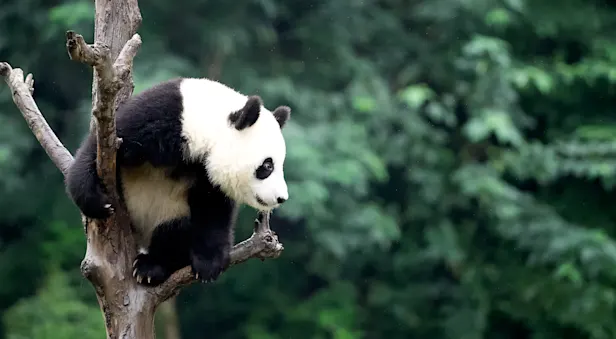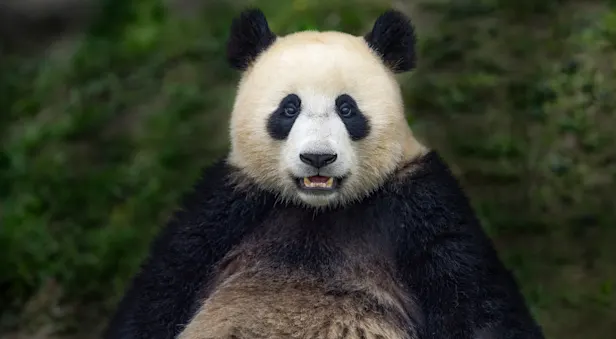Know Before You Go
Golden Snub-Nosed Monkey Facts | China Wildlife Guide
The golden snub-nosed monkey, Rhinopithecus roxellana, is found in the mountain ranges of southwestern China. These largely arboreal primates inhabit deciduous broadleaf and conifer forests along the Tibetan Plateau at elevations of 5,200 to 13,000 feet. In winter, the monkeys descend to woodlands at lower altitudes. Snow cover can last up to six months in the montane forests where these monkeys reside, and the species is among the few primates found in temperate zones.
Physical Description
Snub-nosed monkeys have golden-orange foreheads, necks and stomachs, with darker markings around their crown, nape, outer arms, thighs and tail. Infants are a creamy gray-brown. Golden snub-nosed monkeys have pale blue faces with flat noses and large canines.
Mating & Reproduction
Females reach sexual maturity at 4 or 5 years old, while males become mature at 7 years of age. These monkeys are polygynous: dominant males mate with several females. The mating season typically lasts from September to November; however, breeding behavior is displayed throughout the year. Gestation lasts for seven months, and infants are born between March and May. Usually, one offspring is produced.
Behavior
These highly social primates display a behavior known as fission and fusion, which is the seasonal formation and splitting of groups. Golden snub-nosed monkeys form units of between 20 and 70 monkeys during the winter. These subgroups typically consist of family units, which are composed of one dominant male and about four females with their young. During warmer months, the monkeys will often come together in troops of up to 200 individuals, sometimes forming even larger bands of 600. Fission and fusion is an uncommon practice among other primates.
Communication
Golden snub-nosed monkeys are very vocal, producing 18 types of calls. These primates have a remarkable ability to communicate in a ventriloquist-like manner, showing no visible sign of moving their mouth. However, their vocalizations often correspond with facial movements. Whines, shrills, moans and chatterings are made when expressing affection or aggression, warning of danger, and during peaceful periods of eating, playing or resting. Contact calls are used when coalescing units into larger troops and at the approach of strangers. It is common for choruses of individuals or family units to emit calls together for several seconds at a time. Golden snub-nosed monkeys also communicate through postures and facial expressions. For example, crouching showcases submission, and shrugging the shoulders while staring at the adversary with a closed mouth indicates aggression.
Food Habits
These monkeys are folivores, feeding on the leaves of broadleaf trees as well as pine and fir needles. They also eat flower buds, seeds, bark, fruit, insects, wild onions and grasses. During colder months, their diet is more limited, consisting mostly of lichen and bark.
Conservation Status
Golden snub-nosed monkeys are endangered, primarily due to habitat loss and fragmentation. Deforestation is harming this tree-dwelling species, and it risks losing its forest home and food sources to agricultural expansion. Illegal hunting also poses a severe threat, as the monkeys are poached for their fur, meat and traditional medicine. These primates are protected in nature reserves throughout China and are recorded in Category I of the Chinese Wildlife Protection Act. The golden snub-nosed monkey is also listed in Appendix 1 of the Convention on International Trade in Endangered Species (CITES), meaning trade of this species is strictly prohibited.
See Golden Snub-Nosed Monkeys on These China Trips

The Wild Side of China: A Nature Odyssey
Discover a side of China most travelers never see on our unique itinerary revealing wild panda habitat, rare wildlife and Chinese nature at its most entrancing—including close-up panda encounters.

























